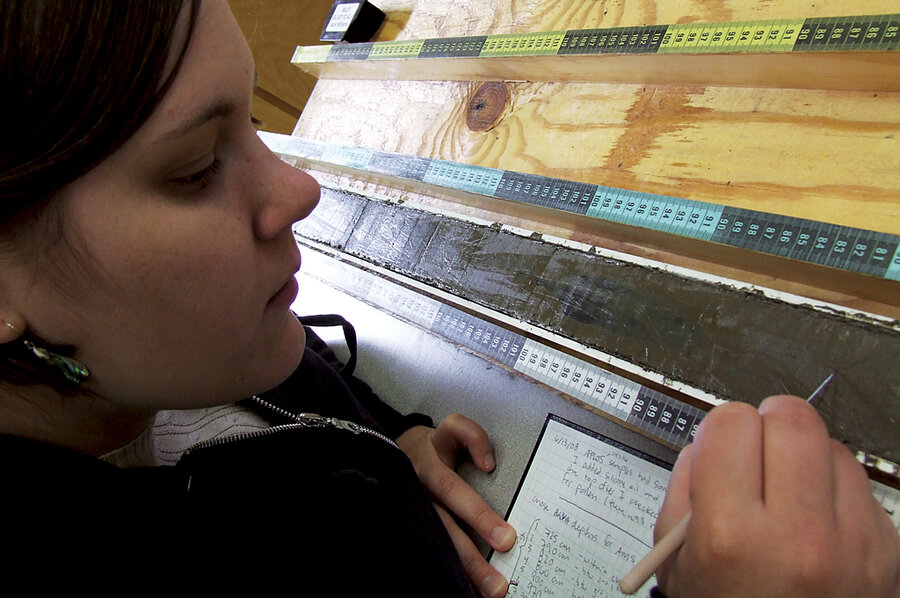With a freshly minted PhD in hand and her first year of postgraduate research under her belt, Jacquelyn Gill would seem to be a fast-track, “sequester”-resistant scientist.
In September, she begins a full-time faculty position at the University of Maine in Orono – unusually quick, even in good economic times.
“It was good news in dire circumstances, given the job market right now for any academic,” she acknowledges.
At the university, Dr. Gill will be judged primarily by the quality of her science research and the pod of graduate students – future scientists – she attracts and trains. While she relishes the idea of teaching undergraduates, “I’m already being told: Don’t try anything too ambitious; you need to worry about grants and [research] papers.”
The main source of money for her kind of research – the study of changes to plant and animal communities through time and the factors triggering those changes – comes from the National Science Foundation. In late February, however, the NSF announced that because of sequestration, it would fund some 1,000 fewer grants during fiscal year 2013 than in previous years – roughly a 10 percent cut in the average number approved.
Last winter, with the sequester in mind, Gill put her research project on hold and devoted two months to writing her first grant proposals, something postdoctoral researchers typically don’t do. If funded, these would allow her to hit the ground running at the University of Maine.
Hers were “pre-proposals” – teasers by design. They would either get rejected outright or lead to an invitation to submit a full-scale proposal – for virtually certain funding, or funding if money is available. One of her pre-proposals fell into the “if money is available” category. But the money wasn’t available, so it didn’t advance.
At this stage, she says, it’s hard to know if her proposal would have gone forward had the NSF not had to incorporate sequestration into its funding calculus.
Typically, she says, scientists just starting out may be doing good work, but they lack the deep record of high-quality research that a 25-year veteran might accumulate. It’s not unusual for a beginning university scientist to go three or four years before the first grant rolls in.
In recent years, however, the NSF also has reduced the number of times scientists can apply for a grant in a given year. Now, they can apply only once a year, instead of every six months. The number of times a scientist can submit a proposal as a lead scientist also has been cut.
It’s possible Gill may receive her first grant with only three years remaining before she faces a tenure committee. No tenure means another job hunt. “I get fewer opportunities to submit proposals, and the odds of getting a funded proposal are declining,” even as demands that she produce good science are increasing, she says.
This is leading some still working on their PhDs to consider other lines of work, researchers say, who note that US budget woes are eating into research at a time when the nation also is placing increased emphasis on science, technology, engineering, and math education.
– Pete Spotts, staff writer







